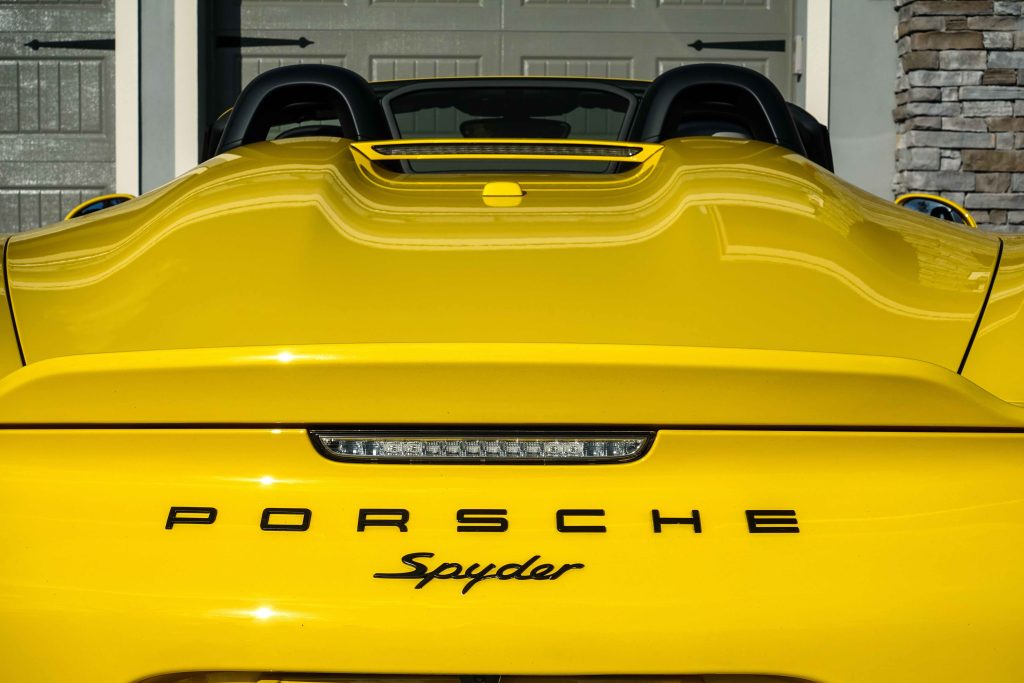
Porsche Spyder Introduction
The Porsche 718 Spyder is a two-seat roadster that has been around since 1957 and has been through several generations of the iconic model. Originally debuting as the Porsche 550 Spyder, this car has been the pride and joy of Porsche enthusiasts for over sixty years. Throughout its history, the 718 Spyder has evolved from a variety of models, including the 907, 908, 909, 910, 911, 912, 914, 924, 944, 968, and 981. Each of these models has brought something unique to the table, from engine performance to modern styling. The latest model to join the 718 Spyder family is the 718 Boxster and Cayman GTS. With each model year, the 718 Spyder continues to offer a unique blend of power and style that Porsche aficionados have come to love.
Porsche Models Throughout The Years
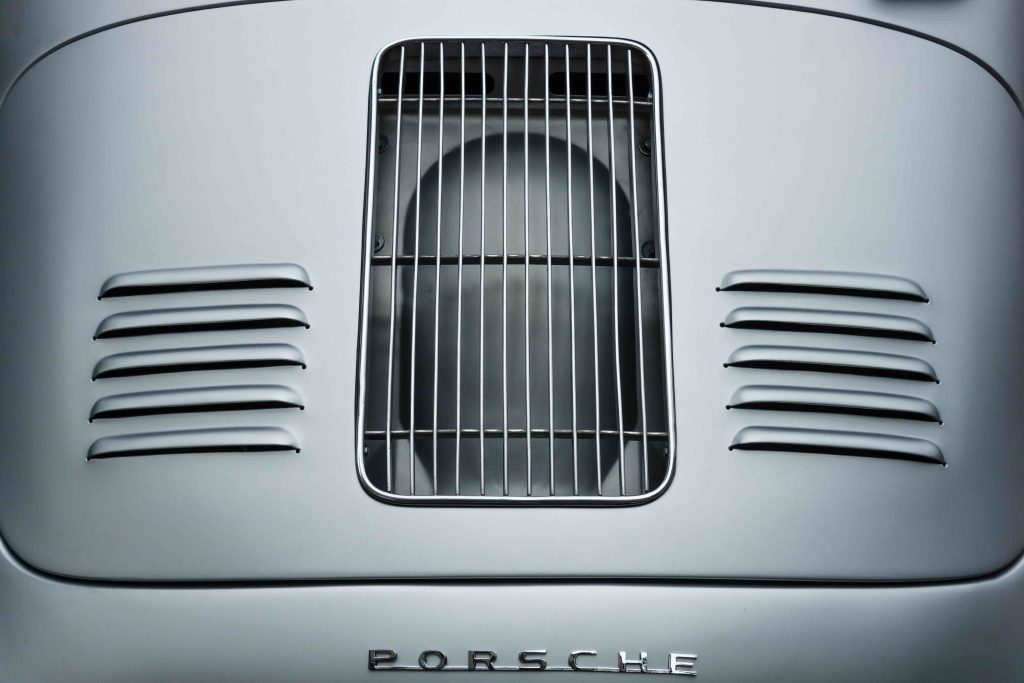
Porsche 907
The Porsche 907 was a race car produced by Porsche in 1967. It was designed to compete in the Group 4 Sports Prototype class of the World Sportscar Championship. The 907 was the successor to the 906 and was designed with the intention of making it lighter and more powerful than its predecessor.
The 907 had a lightweight aluminum body, which allowed it to be more aerodynamic than the 906. It also featured a flat-six engine that produced up to 250 horsepower. The car was designed to be able to run in both wet and dry conditions, and it featured a four-wheel drive system for improved traction.
In 1967, the 907 debuted at the 24 Hours of Daytona, where it finished second overall behind the Ford GT40. That same year, the 907 took part in the 12 Hours of Sebring and the 1000 km of Spa-Francorchamps, finishing in second and third place respectively. The car was also used in the 1968 24 Hours of Le Mans, where it finished fourth overall.
In 1969, the 907 was replaced by the Porsche 908, which featured a larger engine and improved aerodynamics. However, the 907 still managed to win a few races in its final year of competition.
The Porsche 907 was an important part of Porsche’s racing history. It was a groundbreaking race car that set the standard for future Porsche models. Thanks to its success, Porsche has continued to produce race cars that have been successful in a variety of motorsport disciplines.
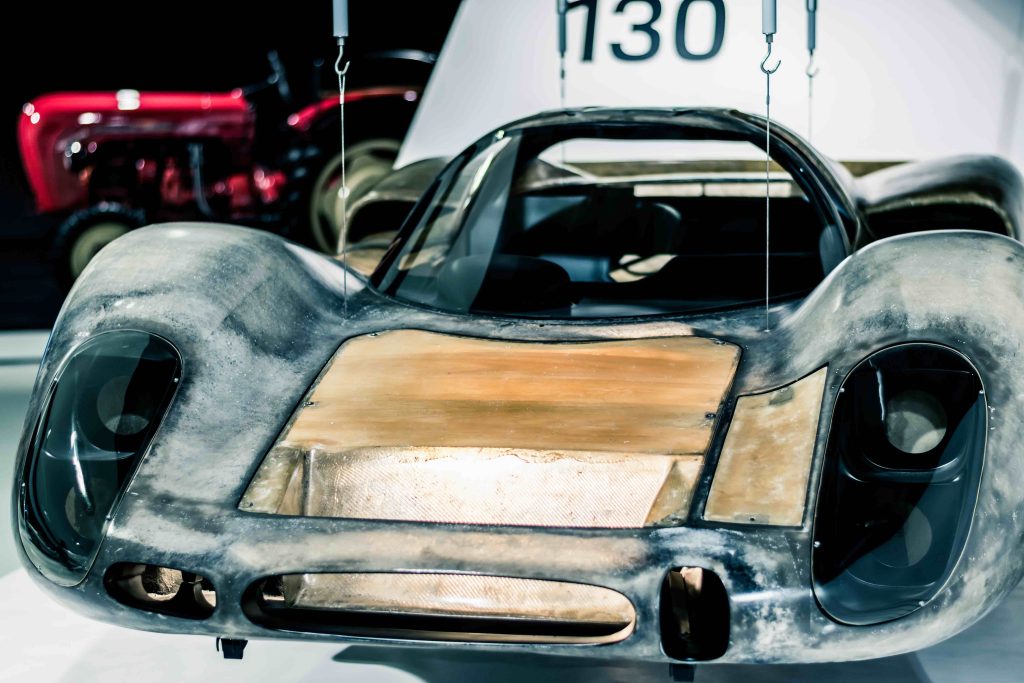
Porsche 908
The Porsche 908 was a mid-engined race car developed by Porsche for both the Group 4 and Group 6 categories of sports car racing. It was based on the successful Porsche 910 and 911 road-going models. The 908 was introduced in 1968 and Porsche produced a total of 33 cars in three versions, the 908/02, 908/03, and the 908/04, between 1968 and 1971.
The 908/02 was the first version of the car, designed to compete in the Group 4 class and powered by a 3.0L flat-8 engine. It was built for the 1968 24 Hours of Daytona and placed sixth overall. The car went on to race in the 1968 Targa Florio, where it placed second overall, and the 1968 1000 km Spa, where it placed third overall.
The 908/03 was an evolution of the 908/02 and was designed to compete in the Group 6 class. It featured an improved chassis and a larger 4.0L flat-8 engine, which was capable of producing over 400 horsepower. The 908/03 first raced in the 1969 1000 km Spa, where it placed fourth overall. It went on to race in the 1969 24 Hours of Le Mans, where it placed third overall, and the 1969 1000 km Nürburgring, where it placed second overall.
The last version of the car, the 908/04, was an even further evolution of the 908/03 and introduced a lightweight fiberglass body and a new 5.0L flat-8 engine. The 908/04 was introduced in 1970 and went on to compete in the 1970 24 Hours of Le Mans, where it placed fourth overall. This would be the last race for the 908 as Porsche retired the model in 1971.
The Porsche 908 established itself as one of the most successful mid-engined race cars of its era. It was the first car to win the 24 Hours of Le Mans in the Group 6 class and it won numerous other races in both the Group 4 and Group 6 categories. The 908 was a major influence on Porsche’s future racing success and is still considered one of the most iconic race cars of all time.
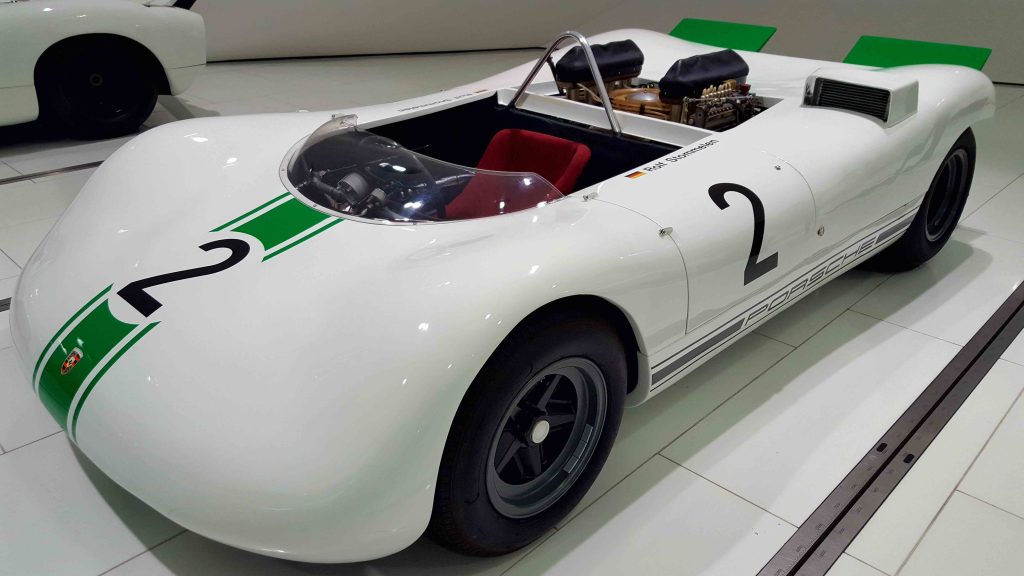
Porsche 909
The Porsche 909 was a prototype sports car built by German automaker Porsche in 1967. It was the first mid-engined car to be produced by Porsche and was only produced in limited numbers. The 909 was developed as a race car with an open-top body style, and was powered by a six-cylinder engine.
The 909 was first unveiled at the 1967 Geneva Motor Show, where it immediately gained the attention of car enthusiasts. Despite the car’s popularity, it was never put into production due to the high cost of manufacturing.
In 1968, Porsche developed a new version of the 909, the 909S. The 909S was designed to be lighter and faster than the original 909, and featured a more powerful engine. The 909S was raced in numerous events, including the 1969 Targa Florio, where it finished second overall.
The Porsche 909 has since become a collectible, with only a few examples surviving. The car remains popular among Porsche enthusiasts, and is considered an important part of the brand’s history.
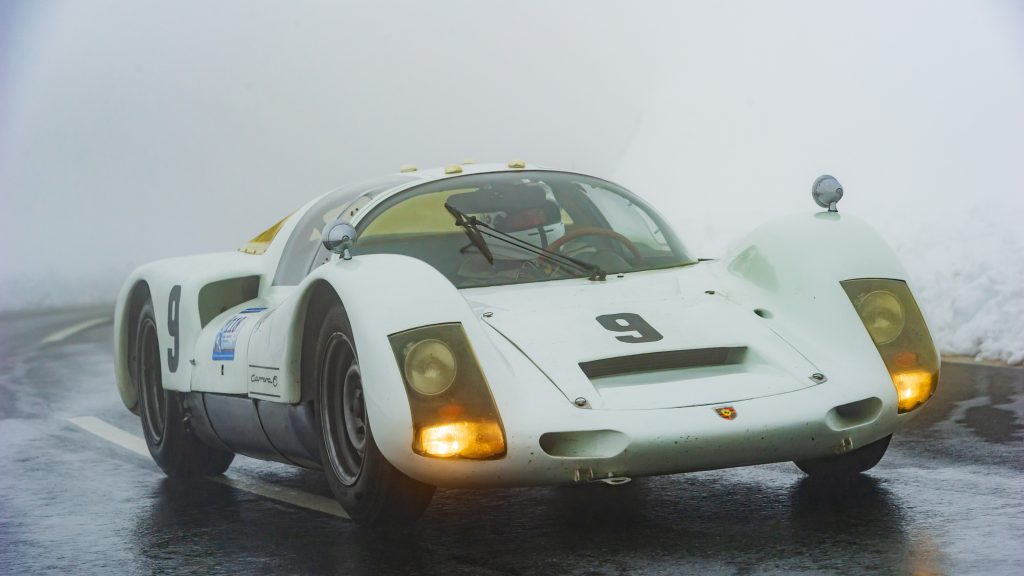
Porsche 910
The Porsche 910 was a race car developed by Porsche for the 1966 racing season. It was an evolution of the Porsche 906, the first race car to be designed and built entirely in-house by the German automaker. The 910 featured a lightweight aluminum tubular chassis, powered by a 2.0L flat-six engine producing around 220 horsepower.
The car was very successful in its debut season, winning a total of seven races, including the Targa Florio, Nürburgring 1000 km, and the European Hill Climb Championship. It also finished second at the 24 Hours of Le Mans, and was on the podium at the 12 Hours of Sebring.
In 1967, Porsche updated the car with new suspension, and a larger 2.2L engine producing 245 horsepower. The car was now known as the Porsche 910/8, and it was even more successful than before, finishing first and second at the 24 Hours of Le Mans, and winning the World Sports Car Championship.
In 1968, Porsche introduced the 910/6, which featured the same 2.2L engine as the 910/8, but with revised suspension and aerodynamics. The car was again successful, winning the 24 Hours of Daytona and 12 Hours of Sebring.
In 1969, Porsche replaced the 910 with the 917, which was an even larger and more powerful race car. The 910 was retired after a successful three-year racing career.
Today, the Porsche 910 is a highly sought-after collector’s item, with a few examples still racing in historic motorsport events. The car’s iconic shape and performance, combined with its racing heritage, make it a desirable classic for any Porsche enthusiast.
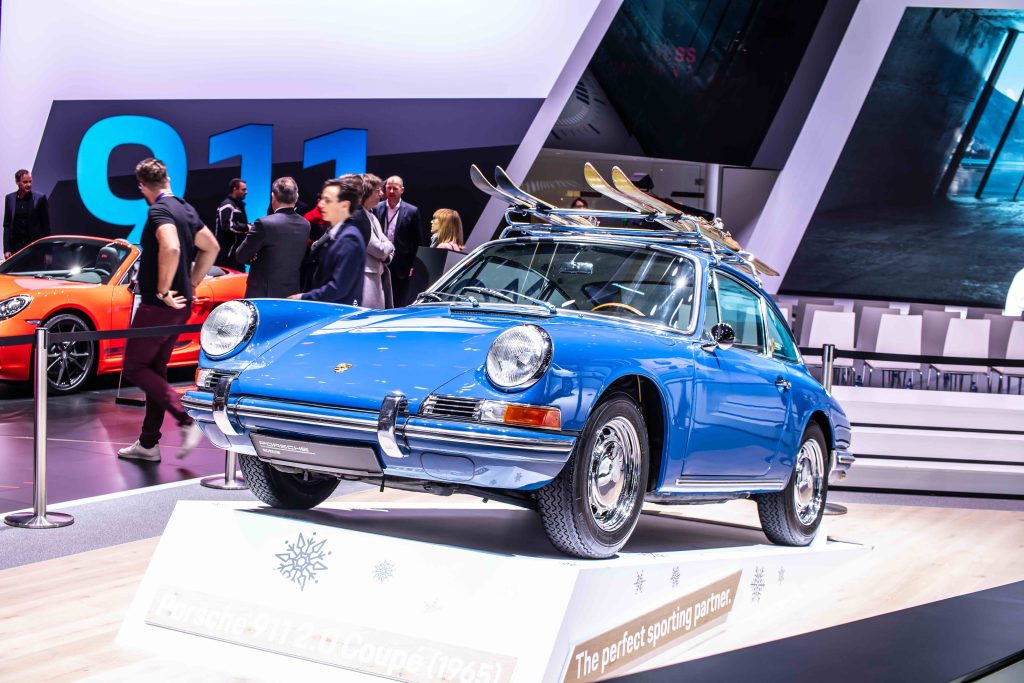
Porsche 911
The Porsche 911 is a sports car that has been in production since the mid-1960s. It is considered to be one of the most iconic models of the Porsche brand.
The first Porsche 911 was introduced in 1965, and it was based on the Porsche 901/911 chassis. It was powered by a 2.0-liter flat-six engine that produced 130 horsepower. The car had a top speed of 135 mph and could accelerate from 0-60 mph in just 8.6 seconds. The car was equipped with a four-speed manual transmission and featured a removable hardtop roof.
In 1969, Porsche introduced an updated version of the 911 with a larger 2.2-liter engine that produced 150 horsepower. This version of the car had a top speed of 145 mph and could accelerate from 0-60 mph in 8.2 seconds.
In 1973, Porsche introduced an even more powerful version of the 911 with a 2.4-liter engine that produced 182 horsepower. This version of the car had a top speed of 156 mph and could accelerate from 0-60 mph in 6.9 seconds.
In 1987, Porsche introduced the 911 Turbo, which was powered by a 3.3-liter turbocharged engine that produced 300 horsepower. This version of the car had a top speed of 182 mph and could accelerate from 0-60 mph in 4.9 seconds.
The latest version of the Porsche 911 was introduced in 2012, and it is powered by a 3.8-liter engine that produces 400 horsepower. This version of the car has a top speed of 191 mph and can accelerate from 0-60 mph in just 3.8 seconds.
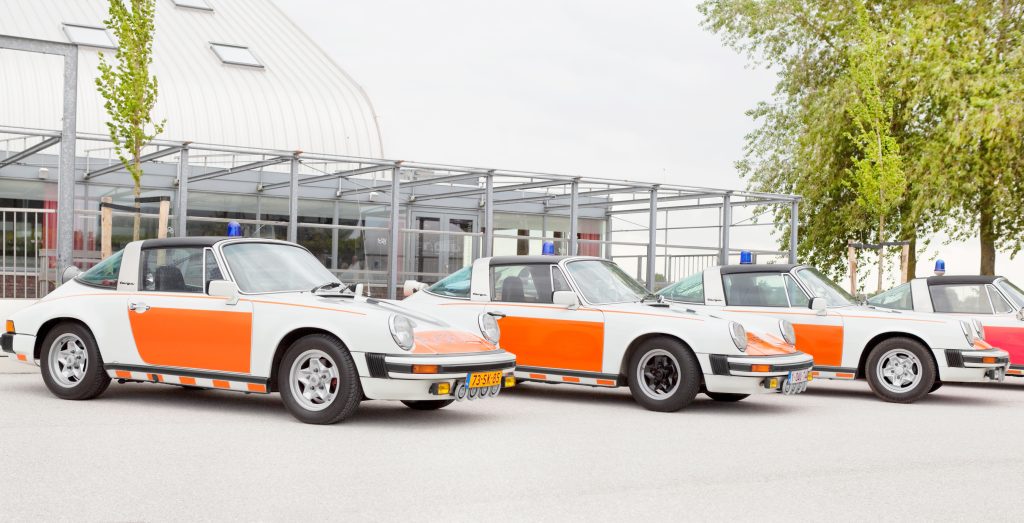
Porsche 912
The Porsche 912 is a vintage racing car that was produced by the German automaker Porsche between 1965 and 1969. The 912 is a two-seater, lightweight sports car with a fiberglass body and a lightweight aluminum frame. The 912 was designed as a racing variant of the Porsche 911, and was equipped with a four-cylinder engine that was derived from the Volkswagen Beetle.
The Porsche 912 was first introduced in 1965 at the Frankfurt Motor Show. Initially, the 912 was only available in a lightweight race-ready version. However, in 1966, Porsche released a street-legal version of the 912 that was available for sale to the public. The street-legal version of the 912 was equipped with a four-speed manual transmission and a 1.6-liter engine.
Throughout the production run of the 912, Porsche made several changes to the car. In 1967, Porsche introduced a 2.0-liter engine and an optional five-speed manual transmission. In 1969, Porsche introduced a four-wheel independent suspension system, which improved the handling of the 912 significantly.
The Porsche 912 was discontinued in 1969, but it remains a popular classic car today. The 912 is highly sought after by collectors, and it is considered to be one of the most iconic Porsche models ever produced.
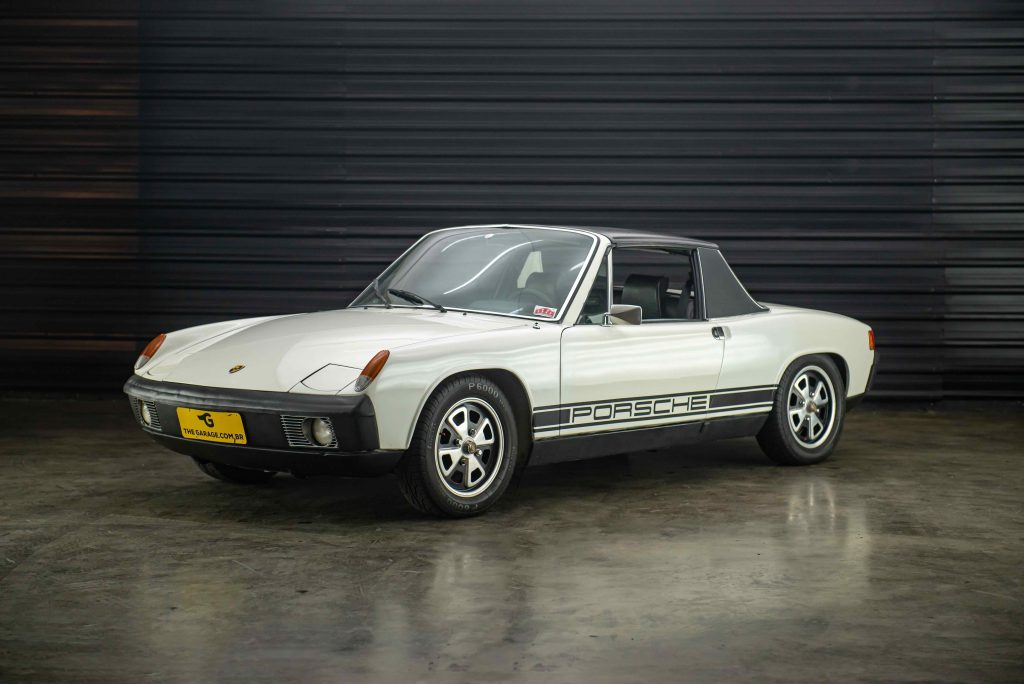
Porsche 914 Spyder
The Porsche 914 Spyder is a mid-engine sports car that was produced by Porsche between 1969 and 1976. The car, which was based on the Porsche 914/6, was designed by Ferdinand Porsche and manufactured by Volkswagen at their plant in Stuttgart, Germany. The car was sold as a two-seater and was available with a variety of engine options, including a 1.7 L flat-4, a 2.0 L flat-6, and a 3.0 L flat-6.
The Porsche 914 Spyder was introduced in 1969, and was an immediate success. It was the first Porsche model to feature a mid-engine design, and was praised for its handling and performance. The car was also relatively affordable, making it a popular choice for budget-minded enthusiasts.
The car saw several updates throughout its production run, including a larger 2.0 L engine in 1971 and a 3.0 L engine in 1973. A limited edition Turbo version of the car was released in 1975, featuring an upgraded suspension, larger brakes, and a turbocharged engine. The car was also available with a variety of custom body kits, which allowed owners to customize their cars to their own tastes.
In 1976, the Porsche 914 Spyder was discontinued, and replaced by the 924. The car was a success, with over 118,000 examples produced during its seven-year production run. Today, the car is considered to be a classic, and is highly sought after by collectors.
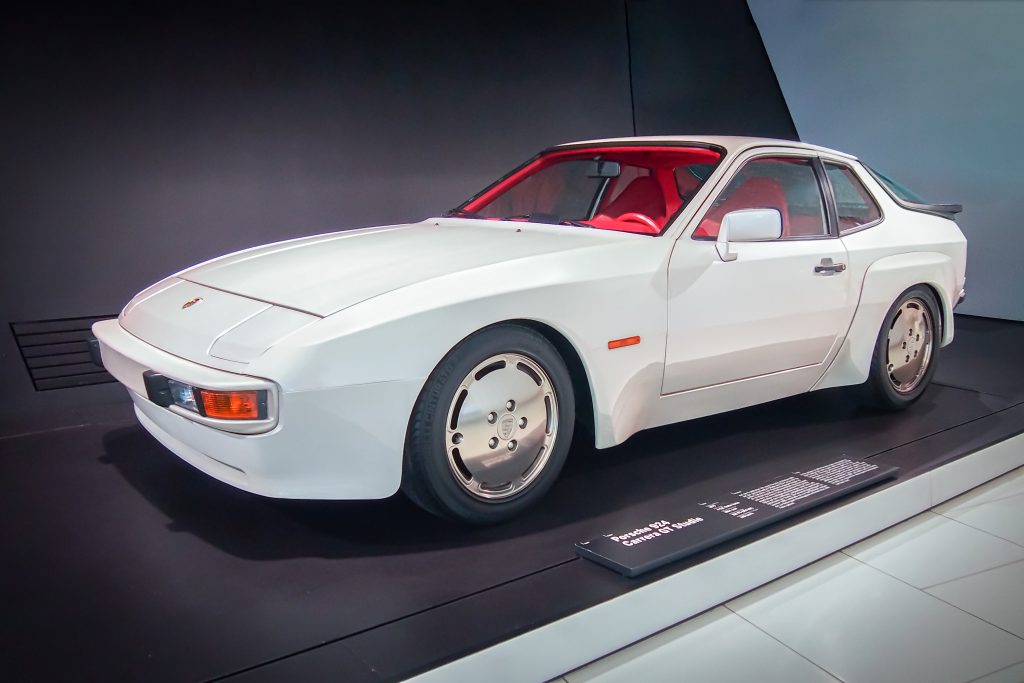
Porsche 924
The Porsche 924 was a concept car based on the Porsche 924 and was first introduced at the 1978 Paris Motor Show. It was designed as a two-seater race car, and was fitted with a 2.0 litre turbocharged engine. It was capable of producing up to 250 horsepower.
The 924 was built in limited numbers, with just 20 cars being produced by Porsche before the project was cancelled. The car featured a wide range of modifications, including an adjustable rear spoiler, a wide body kit, an integrated roll cage, and uprated brakes and suspension.
In 1982, the 924 was resurrected in the form of the Porsche 924 Carrera GT. This car was designed to be a road-legal race car, and featured a 3.0 litre engine producing up to 300 horsepower. It was built in limited numbers and was produced until 1988.
In 1990, Porsche introduced the 924S, which was based on the 924. It featured a 2.5 litre engine, uprated suspension and brakes, and a wide body kit. It was produced until 1998.
The Porsche 924 has become an iconic model in Porsche’s history and has become a sought-after classic. It is highly prized by collectors, and is still seen as one of Porsche’s most iconic models.
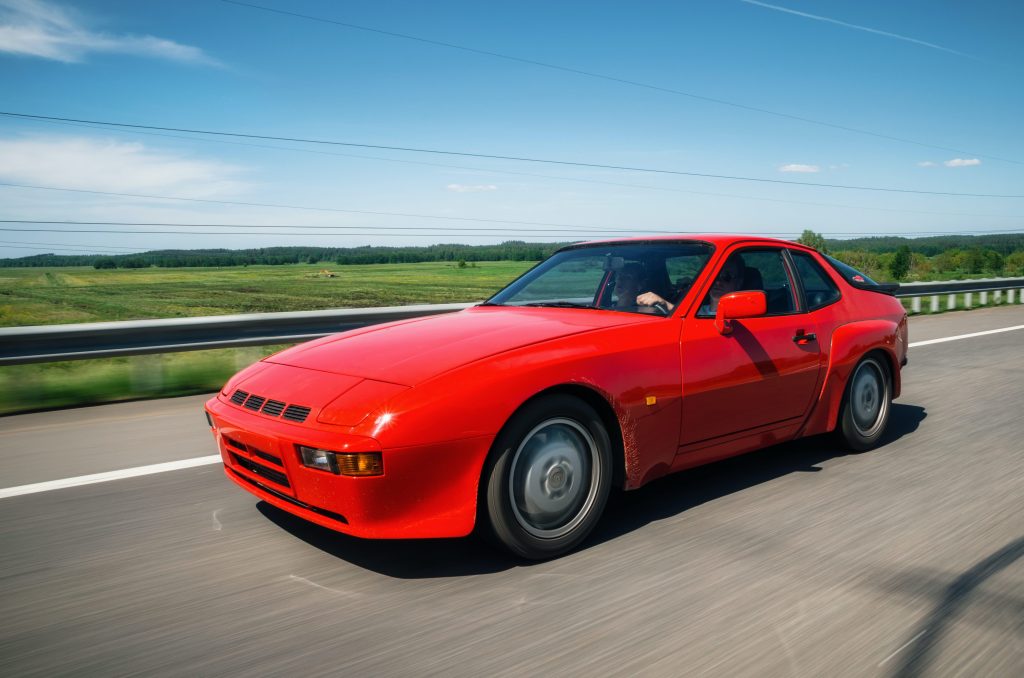
Porsche 944
The Porsche 944 is a limited edition sports car that was produced from 1986 to 1991. It was the first mid-engine production car from Porsche and featured a 2.5 liter, 16 valve engine that generated up to 180 horsepower. The 944 gained its name due to its unique design which included an air scoop on the hood and two large aerodynamic wings at the rear of the vehicle.
In June of 1986, Porsche released their first 944 as part of their “50th Anniversary Edition” series in celebration of 50 years since Ferdinand Porsche founded his company. Only 300 were made with each bearing special serial numbers and plaques indicating they are part of this exclusive series.
The following year in 1987, Porsche unveiled two additional unique editions: The Speedster and Targa models; both featuring improved styling details such as wider wheels, larger spoilers, and more aggressive body kits than previous models had offered. Despite these improvements, only 500 units were ever produced for each model making them quite rare today amongst collectors worldwide.
The final iteration came out in 1989 when Porsche released what would become known as the “lightweight” version weighing almost 1 tonne less than other versions thanks to various weight-saving measures throughout its construction process such as using lightweight alloys for certain parts instead of steel or aluminum ones used before it . In total over 3,100 Porsche 944 models where produced between 1987 -1991 making it one of most popular classic Porsches still around today despite being relatively short lived compared to some other iconic vehicles within their lineup like 911s or Boxsters.
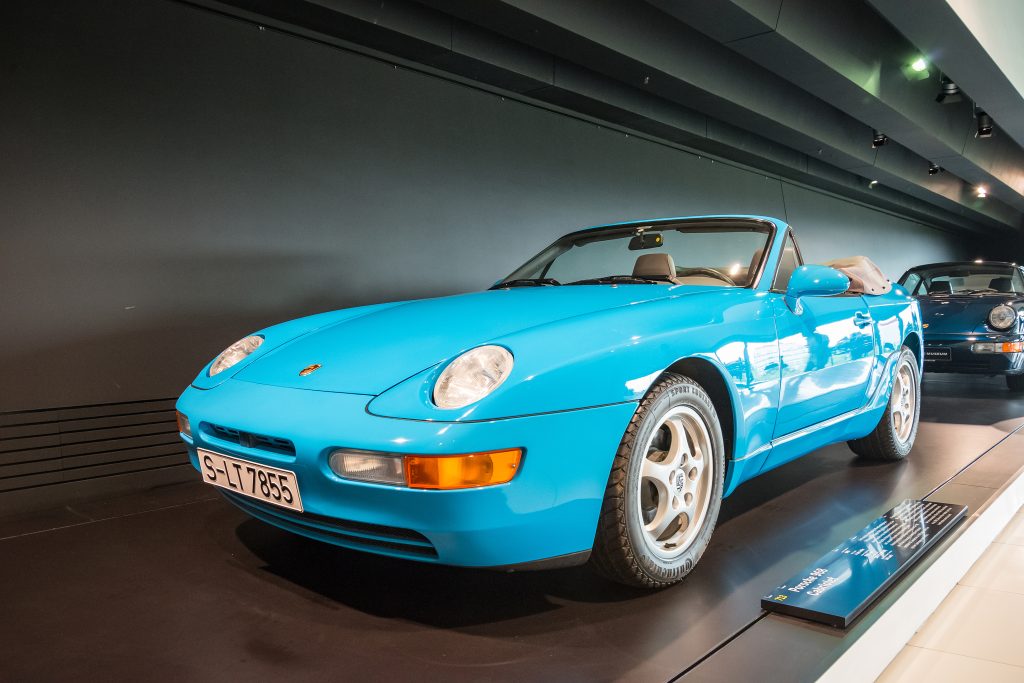
Porsche 968
The Porsche 968 was first released in 1992, marking the last of a long line of legendary front-engined sports cars from the German manufacturer. It featured an all-new 3.0L four cylinder engine producing 240 horsepower and could reach a top speed of 160 mph – impressive figures for its time! The 968 also introduced several design innovations such as its distinctive tail fins and bulging side skirts which have become hallmarks of later Porsche models.
In 1993, the car received some minor updates including revised suspension tuning, lighter brakes and improved aerodynamics that further increased its performance capabilities. In 1994 – an exclusive model dubbed the “Sport” edition was unveiled featuring wider tires, stiffer suspension settings and more aggressive bodywork to give it even more visual presence on the road.
Despite being well-received by automotive enthusiasts at launch, production numbers were limited due to high costs associated with development and assembly; only 1,800 examples were ever made during its three year run from 1992 to 1995. As a result, the Porsche 968 is highly sought after by collectors today with prices fetching up to $50K USD or higher depending on condition.
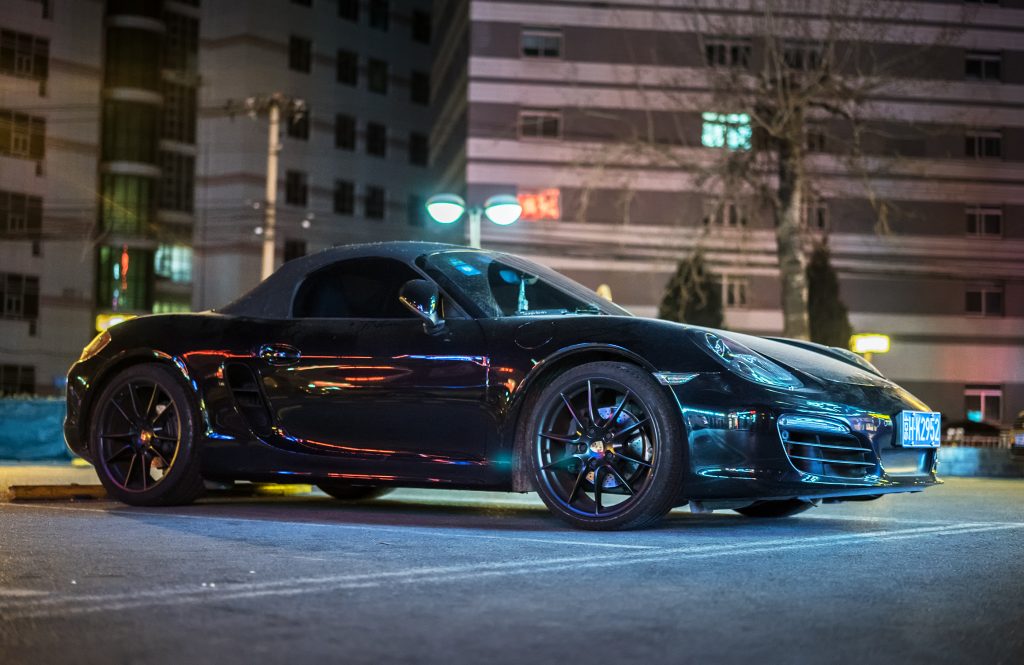
Porsche 981 Spyder
The Porsche 981 Spyder is a limited-edition high performance sports car from the renowned German automaker. It was unveiled in 2014, and it quickly became one of the most sought-after vehicles on the market. The Spyder features a 3.4 liter flat-six engine that produces 375 horsepower, making it capable of reaching top speeds of up to 180 mph. Its unique design is based off of classic mid-engine race cars, with an aggressive stance and aerodynamic body panels to enhance its performance capabilities even further.
The Porsche 981 Spyder has been featured in multiple racing series since its introduction, including the Pirelli World Challenge GT Cup class and Tudor United SportsCar Championship series in 2016. In 2018, it won first place at the 24 Hours of Daytona endurance race as part of Team Absolute Racing’s effort to win their third consecutive title.
In addition to its success on track, the Porsche 981 Spyder has also become highly sought after among collectors for its exclusivity and rarity; only about 800 models were ever produced by Porsche between 2014 and 2019 when production ended due to parts shortages caused by COVID-19 restrictions.. To this day, they remain some of the most coveted vehicles on sale thanks not only to their superior engineering but also their timeless aesthetics that have made them icons within automotive culture itself.
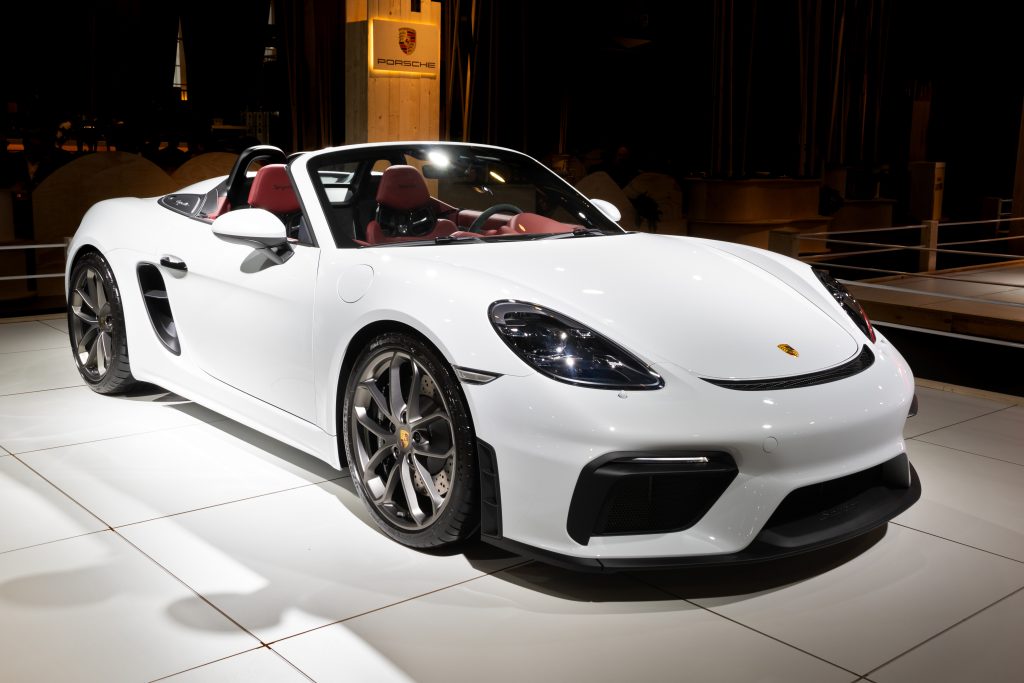
Porsche 718 Spyder
The Porsche 718 Spyder is a luxury sports car that has been in production since 2017. It is the successor to the iconic Porsche Boxster and Cayman models, and is set to be one of the most powerful cars ever released by Porsche.
The new Spyder model was unveiled at the 2015 International Motor Show (IAA) in Frankfurt, Germany on September 15th of that year. The design of this car stands out with its sleek lines and razor-sharp edges, as well as its unique LED headlights which feature four main light elements rather than two like its predecessors.
When it comes to performance, the 718 Spyder boasts some impressive figures. Its 3 liter turbocharged flat-six engine generates 420 horsepower at 6500 rpm while delivering a top speed of 187 mph (301 km/h). This engine also features direct fuel injection for improved efficiency and power delivery compared to older engines used in previous generations of Porsches. Additionally, this car can accelerate from 0–60 mph (0–97 km/h) in just 4 seconds thanks to its seven-speed dual clutch automatic transmission system with paddle shifters for manual gear changes when needed.
In terms of safety features, the 718 Spyder includes an array of advanced driver assistance systems such as adaptive cruise control and lane keep assist which work together to help you stay safe on long road trips or daily commutes alike. There are also airbags located throughout the cabin so everyone inside will remain safe should an accident occur unexpectedly while driving this vehicle. Furthermore, Anti Lock Braking System (ABS), Electronic Stability Control (ESC), Traction Control System (TCS), Hill Start Assist Control (HAC) are all standard equipment on this particular model too – ensuring maximum protection no matter what situation arises whilst behind the wheel!
Overall, there isn’t much more you could want from a sports car like this one – making it perfect for anyone looking for something special yet luxurious at the same time!





